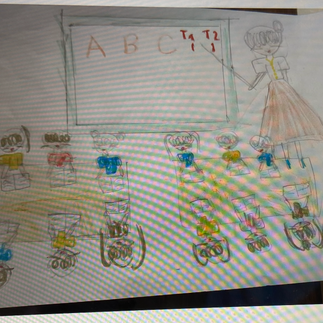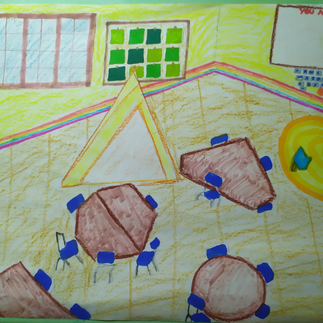Safe and creative spaces
- laviniahirsu
- Dec 21, 2022
- 2 min read
Updated: Jan 29, 2023
Why does an artist need a studio? How does a creative space look like? How does a creative space feel like?
These are some of the key questions we explored in TAG5. In this session, we have started looking at the importance and role of our classroom spaces in teaching and learning. From the arrangement of tables and chairs to the use of walls and boards and the position of the teacher and students in the classroom, all these elements matter in how a classroom ‘feels’. Creativity in the language classroom can emerge in a variety of spaces and we don’t always need a large classroom to make children feel comfortable to learn and to explore their imagination.
Given that many classrooms in our teachers’ contexts have large numbers of students and the furniture is not always very easy to move or rearrange, in TAG 5 we shared strategies and activity ideas to foster children’s creativity. We explored how to maximise the walls and windows to create space, how to ensure movement in the classroom when mobility is limited, how to be inclusive and enable children to do their projects in multiple modes (visually, orally, through object- and craft-making), and how to stimulate students’ choices and decision-making in learning and expressing their ideas.
Space is a critical dimension of learning and teaching because it is connected to three other important elements: knowledge circulation, power and agency. Instead of concentrating knowledge and power at the front of the classroom, in our session we discussed how we can enable knowledge to circulate around the room: from teacher to student and back, among students in groups and/or pairs, and between the objects we bring to the classroom and the learners (e.g., props, crafts and textbooks).
Teachers in our groups reflected on their own spaces by creating drawings of their actual classrooms, as well as drawings of their ‘dream’ classrooms. Here are some of these drawings for inspiration and reflective thinking:
We may not always be able to create an artist's studio in our classrooms, but we can definitely create art walls, the artist's corner, and a classroom atmosphere that opens the children's learning to many possibilities. Alternative spaces such as playgrounds, gym rooms or any other school spaces can be used as new inspiring environments for learning.














Comments